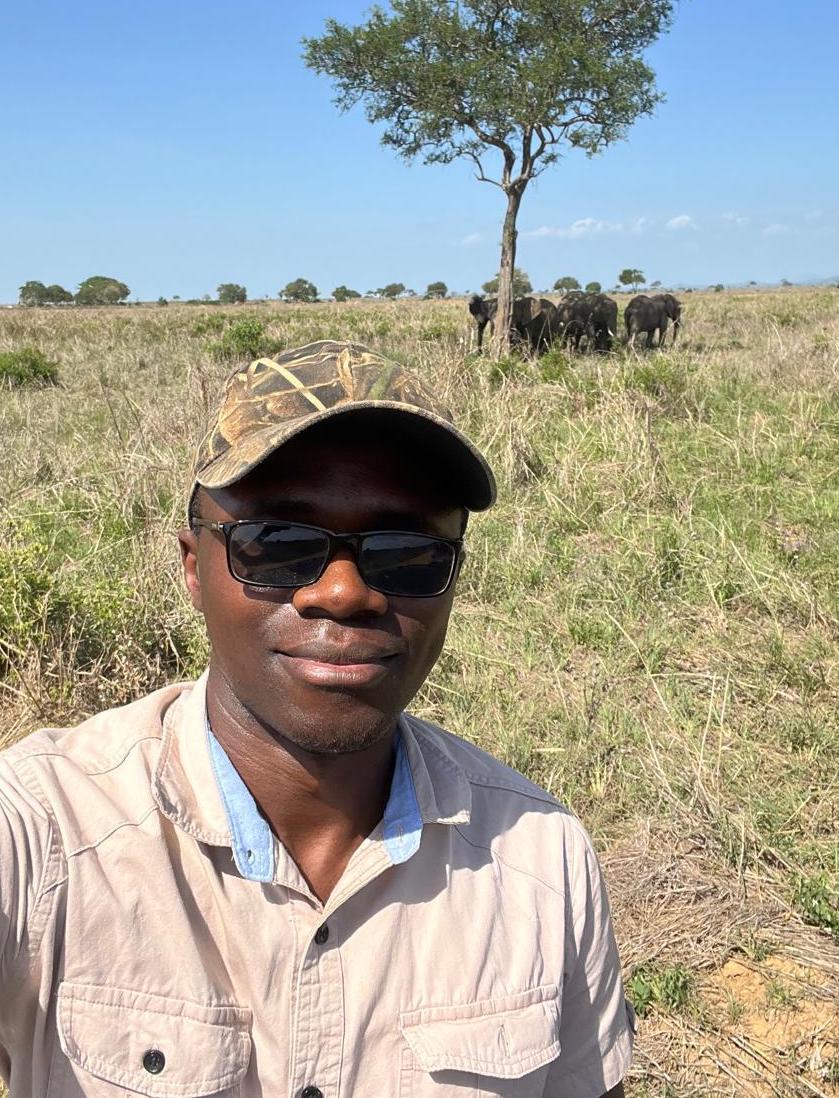Felician Ezekiel Chemihanda
Human-elephant conflict (HEC) in Tanzania’s Mikumi National Park poses significant challenges to both wildlife conservation and local communities. Growing human encroachment, driven by demands for farmland and charcoal production, has disrupted traditional elephant migratory routes, leading to habitat loss and increased retaliatory killings. At the same time, small-scale farmers experience crop losses of up to 50%, heightening tensions between conservation efforts and community livelihoods. Tackling this conflict requires a deeper understanding of elephant movement patterns and the environmental factors influencing their behaviour. However, farmers often lack such information, leaving them vulnerable to damage caused by elephant raids. One promising solution is strengthening community-based monitoring using digital tools, which can provide real-time data for decision-making at local and national levels.

Felician pictured with elephants at Mikumi National Park. © Felician Ezekiel.
This project, supported by the Rufford Foundation, aims to bridge the knowledge gap by equipping farmers with the skills and tools necessary to track elephant movements. By establishing Elephant Monitoring Groups (EMGs), the project will empower local communities to collect and use data to proactively mitigate HEC. Additionally, integrating HEC education into primary school curricula will raise conservation awareness from an early age. This approach aligns with Tanzania’s national HEC strategy and promotes sustainable coexistence between people and wildlife.
Mikumi National Park is a key ecological area, home to diverse wildlife such as elephants, lions, giraffes, zebras, and over 300 bird species. However, habitat destruction and poaching threaten its biodiversity and exacerbate HEC. This project seeks to address these issues by promoting sustainable conservation practices and community-led monitoring to protect critical habitats and species.
A primary focus is the conservation of the African savanna elephant (Loxodonta africana), listed as Endangered by the IUCN Red List. The species faces significant threats from habitat loss, poaching, and increasing conflict with human populations. By engaging farmers in systematic monitoring, this initiative will reduce negative human-elephant interactions and raise long-term conservation awareness through school curricula.
The project will establish three EMGs in high-conflict areas, training 30 farmers to monitor elephant movements using digital tools. A structured monitoring plan will ensure consistent data collection, while a workshop for teachers will integrate HEC education into curricula. Collaboration with community leaders, conservation organisations, and government agencies will foster effective HEC mitigation strategies, ensuring the project’s sustainability and long-term impact on elephant conservation at Mikumi National Park.